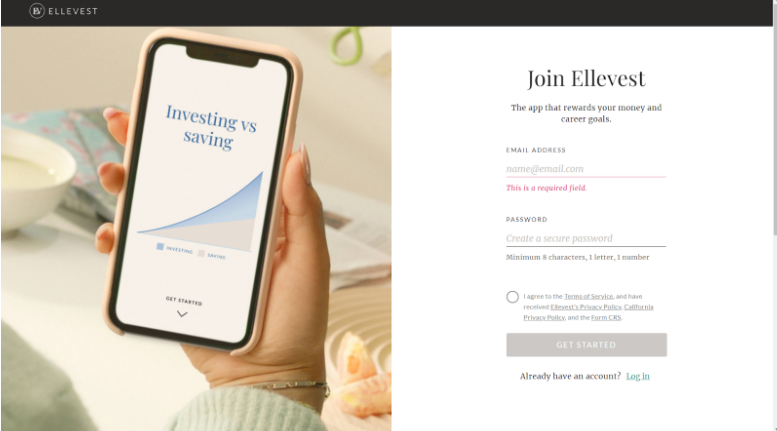
There are many coaching models. The group model is one of the most commonly used. This is for teams. Group coaching helps team members improve their performance and promotes self-management within the group. This is a great method for high-performing teams that require team members to align with the team's goals, build a sense of team spirit and work effectively together.
GROW model
GROW helps clients determine the next step in their journey to achieving the desired change. This starts with clarity of goal. This allows clients to understand their motivations and helps them identify potential obstacles. Because desired change can cause emotional reactions, it is important to identify your personal connection to the goal. The GROW coaching model helps clients explore their motivation and strengths to move forward with their desired change.
The GROW coaching model enables clients to identify what works and how to prevent potential problems. The client can then implement different strategies through goals and action points. A client might want to eat healthier and can make healthy choices such as buying fresh fruit and vegetables. Ask questions and explore all options. The coachee must then outline an action plan for the client to follow over time.

Alternative story
The Alternative Story for Coaching model employs an experiential approach to help clients accept and embrace new ideas. The process involves deconstructing a client's current beliefs about their situation and reconstructing new beliefs through the creation of an alternative story. The client may not even realize that they have an internal story about their situation, but bringing it into awareness is powerful in itself. It can make a huge difference in how a client perceives a situation.
WOOP
The WOOP model teaches clients to define a goal, and to identify obstacles that may prevent their success. This model helps clients resolve conflicts between their professional and personal goals. The goal must not only be challenging but also realistic, attainable and achievable. Learn more about SMART Goals in HPRC's article. The worksheet can be used to help you create your own.
Gabriele Oettingen, who is a professor from the University of Hamburg and New York University, developed WOOP. Oettingen has also studied self regulation for many years. She is also co-author of the book, "Rethinking Positive Thinking", which emphasizes the importance goal-setting.
CLEAR
CLEAR focuses on developing committed employees. The approach supports individual growth and is ideal for managers who want to build better leaders. The model has five main stages. These phases focus on setting expectations, identifying the needs, and communicating those to the employee. Both can gain from the coaching relationship. This model is flexible and can be implemented in many different situations.

The CLEAR coaching process begins with specific and targeted questions. During this phase, the coach seeks to clarify the coachee's perspective, identify emotions, and understand what motivates them. The coach may have to intervene if the coachee is unable to see the positive sides of the problem or has a negative outlook. The coach may also be able to facilitate the discussion by asking in-depth questions.
FAQ
What are the steps to life coaching?
Coaching is more than helping people solve problems. It's about helping them find their passions and use these passions to make a difference in the lives of others.
Life coaching helps you identify what matters most and gives you the skills to create the kind of life you want. You can use it to take control over your future and discover who you really are.
Coaching helps you understand yourself and others. This is a key ingredient for healthy relationships. Coaching can help you be a better parent, friend, leader, and partner.
Are life coaches really effective?
Life coaches help you understand your motivations and to set goals. You can also learn strategies to overcome obstacles.
They help us set realistic goals and monitor our progress toward them.
Life coaching helps people to become more aware of themselves and makes it easier for them to make better choices. It helps people to improve their relationships and manage difficult situations.
What can a life coach do to help with anxiety?
It's important for people to know that there are many different types of anxiety disorders. Each individual responds differently to the same stimuli. The best way to approach an anxious client is by first identifying their type of anxiety.
This will enable them to devise a plan of treatment that addresses their particular issue.
Life coaching, in general, helps people to take control of their lives.
You should consider whether the life coach specializes in helping clients with these types of issues if you are looking for one.
Also, make sure to ask if the coach offers workshop and group counseling.
This will enable you to meet up with them or her frequently and discuss your progress.
It is also important to inquire about the credentials and training of your coach.
How much does a life coach cost?
A life coach charges typically $100-$500 per hour.
They spend an average of two weeks working on a client's case, depending on what coaching you need.
A typical fee includes an assessment and consultation, as well as weekly calls or Skype sessions to discuss progress or plan for the future.
As well as providing guidance and support, a life coach will help clients set goals, identify issues, develop strategies for overcoming obstacles and solve problems.
Statistics
- Needing to be 100% positive and committed for every client regardless of what is happening in your own personal life (careerexplorer.com)
- These enhanced coping skills, in turn, predicted increased positive emotions over time (Fredrickson & Joiner 2002). (leaders.com)
- This also doesn't mean that the give-and-take in a relationship is always 100% equal. (verywellmind.com)
- Life coaches rank in the 95th percentile of careers for satisfaction scores. (careerexplorer.com)
- According to relationship researcher John Gottman, happy couples have a ratio of 5 positive interactions or feelings for every 1 negative interaction or feeling. (amherst.edu)
External Links
How To
How to become a coach for life
Being a life coach is a popular question. There are many ways to become a life coach, but you should take some basic steps before becoming a professional life coach.
-
Find out what you want to do. You must know your passion and interest before starting any career. If you don't know your passion, it can be difficult to get into coaching. Before you start looking at the different options, consider what interests you in this field. If you are thinking "I would like help people", then it is time to look into how to be a life coach.
-
Set goals and create a plan. Once you know what you want to pursue, make a plan. Read books and learn about the profession. Write down everything you learn so that you can refer back to them when needed. Without a clear goal or vision, don't rush to do things. Set realistic goals that can be achieved over the next few year.
-
Be patient. You will need patience and determination to be a life coach. The hardest year is often the first. After your initial training, you may spend as much as 2-4 hours per day working with clients. You will be required to work weekends and long hours. If you are passionate about what you do, you won’t feel tired even if it takes you 14 hours per week.
-
Get certified. You need certification from a recognized body such as NLP Certification Institute to become a licensed Life Coach. Your certification will increase your credibility and open doors to other opportunities.
-
Network. Don't forget to develop relationships with other coaches and experts in the field. Share knowledge with others and ask for advice. When you have enough experience, you will be able to provide support to other coaches who are just beginning their journey.
-
Never stop learning. Never stop learning. Learn more about the field by reading books, articles, and blogs. Learn more about human behavior, psychology, communication skills, etc.
-
Keep positive. Negative attitudes are one of the biggest errors made by new coaches. It is important to remember that success in life coaching requires a positive attitude. Your words and actions can reflect on your clients. Remember to smile and have a positive outlook!
-
Practice patience. As I mentioned earlier, the first one year of life coaching is often the hardest. Take breaks, and think about why you want to be a life coach.
-
Enjoy the process. While it can seem like an endless journey ahead, the rewards far exceed the challenges. Along the way, you will meet incredible people and grow personally.
-
Have fun. Enjoy the ride. Remember, have fun.